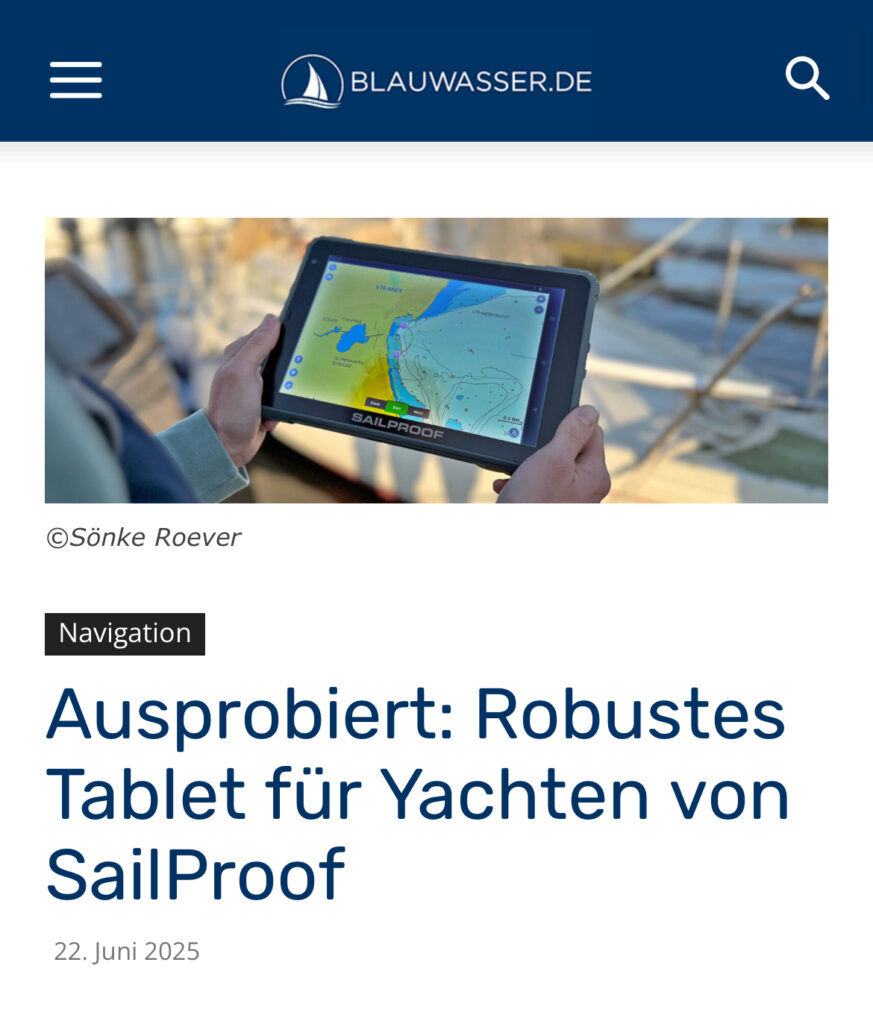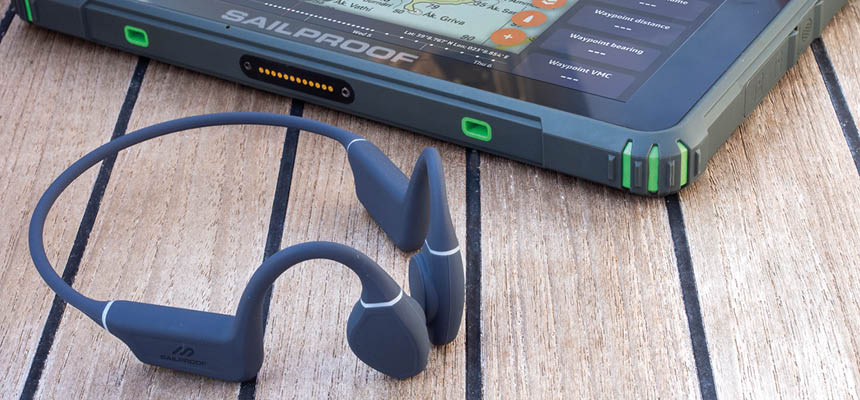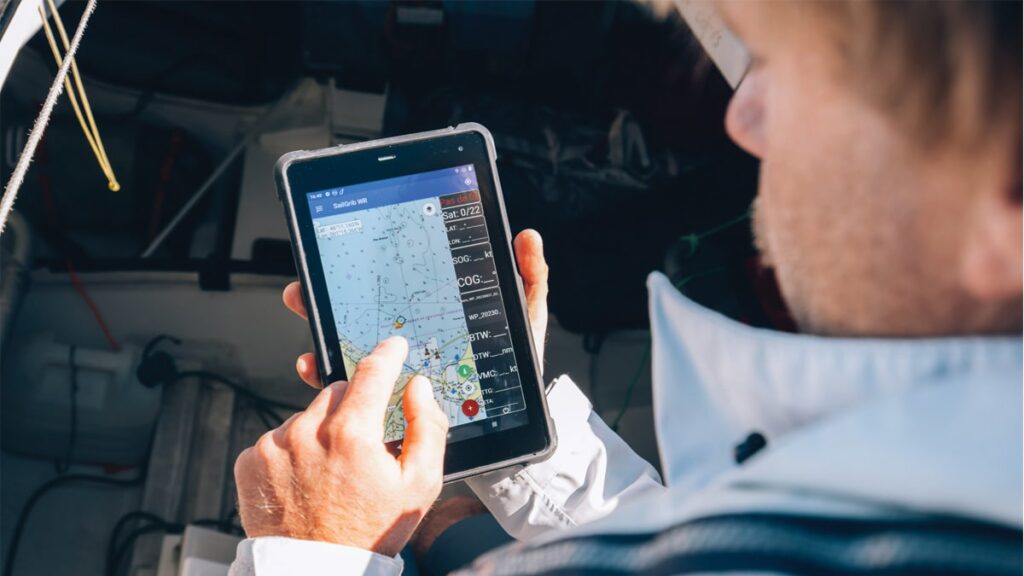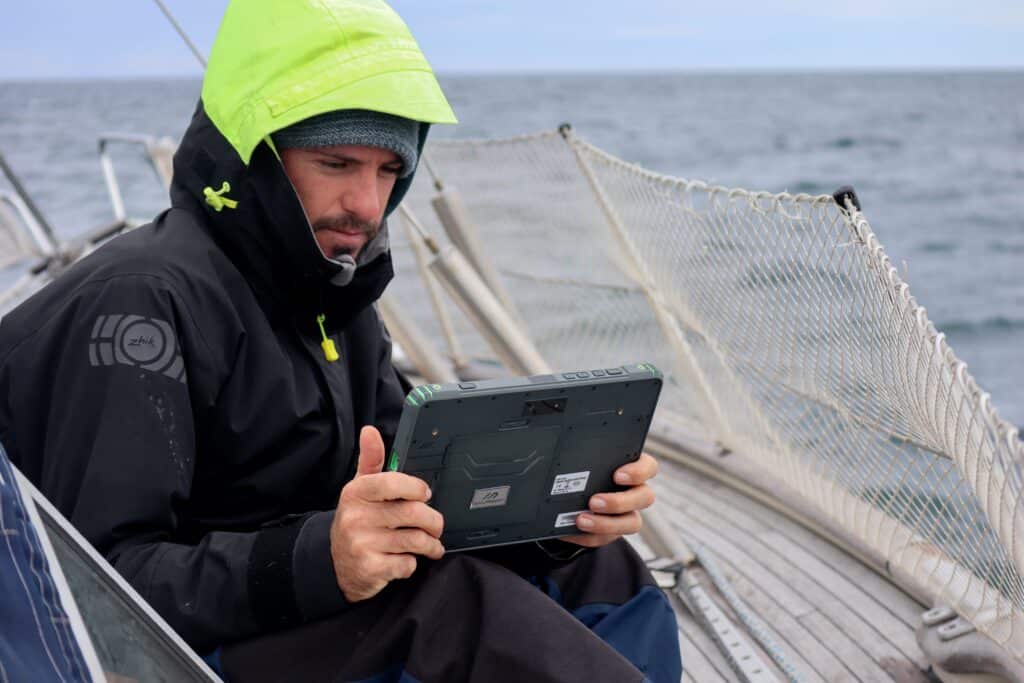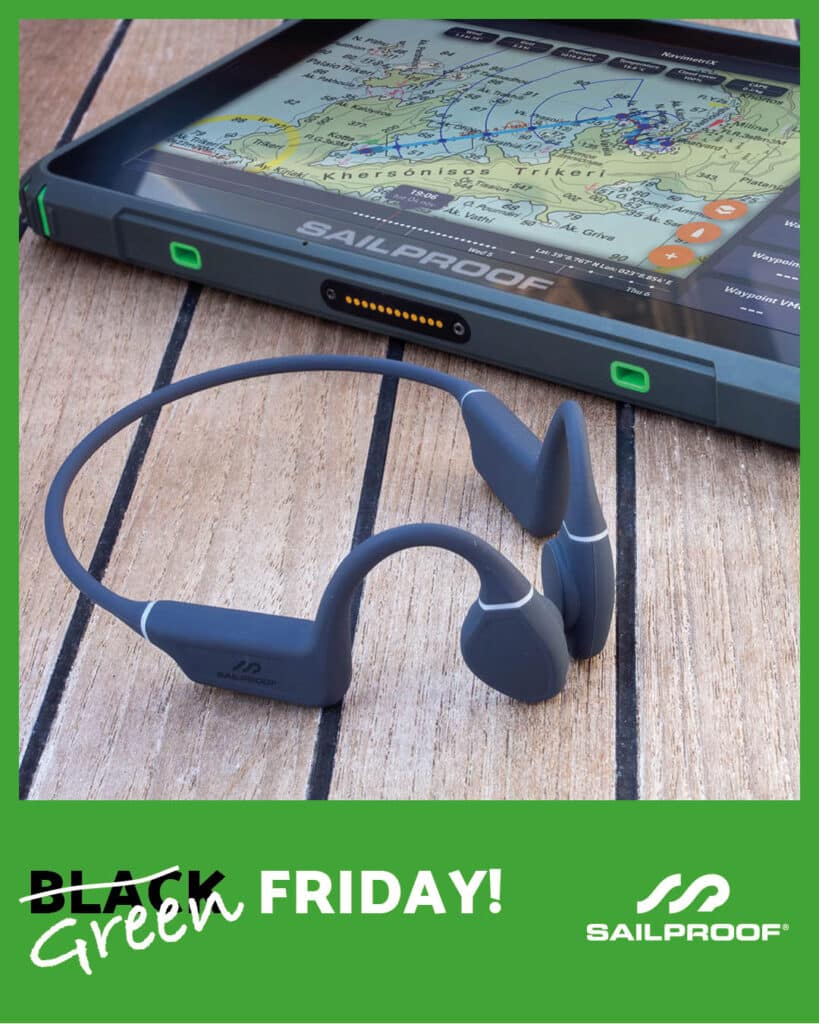SailProof Makes Android Tablets Sea-Ready
Tablets are popular among sailors and have in some cases already replaced chartplotters on board. They are generally more affordable and work just like a familiar smartphone, meaning there’s no need to spend time learning an unfamiliar user interface. Another advantage is that a tablet isn’t permanently installed and can be used wherever it’s needed—whether on deck, below deck, or for passage planning ashore.
Tablets also offer far more functionality than a chartplotter: they are open to a wide range of apps for navigation, weather, and entertainment—such as e-books, movies, photos, or games. That’s exactly what led me, a little over ten years ago at the start of our bluewater journey, to forgo a chartplotter and navigate using a tablet instead.
Looking back, we can say that technically, the tablet navigated us around the world without issues. The downsides were its sensitivity to moisture and mechanical stress. Despite a rugged protective case, the display broke twice over seven years, the charging port had to be replaced once due to corrosion, and several USB charging cables failed. In addition, operating the device with a wet screen and reading it under direct sunlight were constant challenges.
This is exactly where the company SailProof comes in. Their Android tablets were specifically developed by sailors for sailors to withstand the harsh conditions at sea—including saltwater, moisture, extreme temperatures, and heavy use. The company promises a tablet that is not only extremely durable but also has a display that can be operated reliably with wet hands and remains readable in bright sunlight. Add to that built-in GPS, long-lasting batteries, and multiple connection options. That was reason enough for me to thoroughly test the tablet on board. I took it on a longer voyage and exposed it to various real-world stresses—which it handled well. I’d now like to share those experiences in detail.
SailProof Android Tablets at a Glance
The tablets from SailProof come equipped with the latest Android operating system. They are available in 8- and 10-inch display sizes and feature an octa-core CPU with up to 2.4 GHz, up to 8 GB of RAM, and up to 128 GB of internal storage. Wireless connectivity is possible via Wi-Fi, Bluetooth, and mobile networks with 4G or 5G support. On the back, there is a 13-megapixel camera, and on the front, a 5-megapixel one—making the tablet suitable for photography and video chats.
Up to this point, they differ little from standard Android tablets. What sets them apart is their exterior design. The tablets are IP67 certified, meaning they are completely waterproof. The display glass is rugged and features anti-reflective technology, making it resistant to impacts and other physical stresses, while remaining readable in sunlight—even when wearing polarized sunglasses.
Additionally, the display technology used by SailProof allows for operation when wet and while wearing gloves. The lithium-ion battery has a generous capacity of 9,800 mAh, and the GPS chip promises accuracy within less than one meter. Other features include a shockproof casing and multiple ports for charging and external control.
For my test, I used the SP10X model. My first impression upon unboxing was that this is a thoughtfully designed unit built to withstand tough conditions. The tablet is relatively heavy and is protected by a sturdy plastic and rubber casing. All ports are sealed with waterproof covers. These include a USB-A and a USB-C port, one plug each for the power adapter and headphones, two SIM card slots, and a special connector for SailProof’s waterproof power supply.
In addition to the special power connectors, the USB ports can also be used for charging. That means there are four different charging options available! Another handy feature is the configurable power plug—it can be easily adapted to fit any socket type worldwide. This makes on-shore passage planning truly hassle-free.
Also built into the outer shell are the microphone, speaker, and a light sensor. Additionally, there’s a power button, volume controls, and two freely programmable buttons. A practical detail is the included elastic strap, which can be mounted on the back using four screws—allowing the tablet to be held securely in one hand.
Setting Up the SailProof Android Tablet
It’s important to understand that SailProof focuses on hardware, not software. The company develops rugged tablets but does not create its own operating system or apps. As a result, the tablet must first be set up like any standard Android smartphone or tablet. This includes connecting to Wi-Fi, setting up the SIM card (if desired), selecting the system language, and other basic preferences. As is typical with Android, linking a Google account is also part of the setup. Users already familiar with Android should have no trouble, and even newcomers are guided smoothly through the process.
Once setup is complete, navigation isn’t yet possible, as the necessary apps are not pre-installed. Users are free to install their favorite apps themselves. I chose Garmin Boating for navigation, Windy and PredictWind for weather forecasts and routing, and Button Mapper to assign functions to the programmable buttons. I also installed GPS Test to check the GPS signal.
Tip: During setup, go to Settings > Display and increase the timeout duration under “Sleep” to prevent the screen from turning off after just a few seconds. In the Garmin Boating app, you can also enable Menu > Settings > Keep Screen On, so the display stays on continuously while navigating.
Using the SailProof Android Tablet
Overall, the tablet’s functionality leaves a high-quality impression. Bluetooth, Wi-Fi, and mobile networks connect without issue, and the apps launch quickly and run smoothly. Depending on the surroundings, the GPS receiver may take a moment to determine the initial position after startup, but once it locks in, it works responsively and very accurately. Using the Garmin Boating app worked very well.
I first tested the tablet under direct sunlight. While readability was slightly reduced compared to shaded areas, it was still perfectly sufficient for navigation. The only thing to be mindful of is the viewing angle, as glare can occur in some positions. However, a slight rotation of the tablet easily resolves this. In general, the screen is a bit brighter than that of other tablets, such as an iPad.
Two days later, we were sailing in pouring rain, which—unusually—I was actually happy about. It gave me the perfect opportunity to thoroughly test the waterproofing and usability with a wet screen. The tablet suffered no damage, even after getting thoroughly “showered.”
There were some minor limitations in operability. At times, the software reacted to the touch of raindrops, and zooming with two fingers sometimes required a second attempt. However, this was an extreme test during a downpour. Once I angled the tablet slightly out of the direct rain, it worked flawlessly despite the wet screen—and significantly better than a tablet inside a rainproof cover.
Toward the end of the trip, I accidentally dropped the tablet, and it hit the floor hard. The result: not a scratch or crack on the screen. For me, that meant the tablet passed the stress test at sea with flying colors!
Another positive aspect was the battery life: I was able to complete several hours of sailing without needing to recharge in between.
Useful Accessories for the SailProof Android Tablet
The tablets from SailProof come with various charging cables, the appropriate power adapter, and a mounting strap for the back, and do not require any additional accessories to operate. If the tablet is to be permanently mounted—for example, at the helm station—a tablet holder is a good idea. The SailProof shop offers various solutions from the company Scanstrut. Also practical for fixed installation is the charging cable for waterproof connection to the SP08XW and SP10XW tablets. A matching waterproof socket is also available and can be permanently installed in the cockpit.
The shop also offers spare batteries. The battery of the SailProof tablets can be quickly and easily replaced using two sliders. Charging stations are also available for some models.
Tip: Chartplotters usually display data from other onboard devices, such as AIS, wind sensors, or depth sounders. This is also possible in some navigation apps on the tablet. A special transmitter is required for this, which is connected to the boat’s NMEA network and then linked to the tablet via Wi-Fi. Some chartplotters also support this functionality.
Conclusion
The SailProof tablet has thoroughly convinced me. Reliable apps and high-quality charts for navigation using a tablet or smartphone have been available for quite some time. In terms of performance and reliability, high-end tablets are definitely comparable to chartplotters.
However, for me, the main issue was always the fragility of mobile devices, which don’t hold up well to the often harsh conditions at sea. SailProof has tackled this challenge and solved it with their well-designed, rugged tablets.
Jonathan Buttmann
